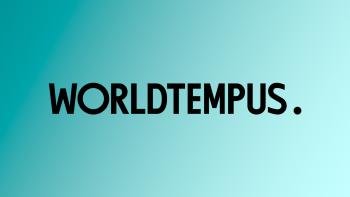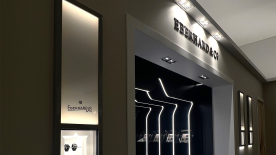Rapport 2008 sur la Richesse du monde (Merryll Lynch et Capgemini) :les grandes fortunes pratiquent plus que jamais « l'investissementpassion », mais pas toujours ni partout dans les montres de luxe…
 ÉCONOMIE : ouf, les riches aiment toujours les montres !
ÉCONOMIE : ouf, les riches aiment toujours les montres ! La consommation des ultra-riches permet à Merryll Lynch et Capgemini de mieux situer les « passions » : les Européens et les Sud-Américains préfèrent l'art, le vin ou les collections, alors que les Asiatiques et les Proche-Orientaux adorent les montres, les Américains préférant les voyages d'exception.EXTRAITS DU RAPPORT CONCERNANT L'INVESTISSEMENT PASSION :
HNWIs' Pursuit of “Passion Investments” Is Not Deterred by Economic Volatility
HNWIs and Ultra-HNWIs allocate and spend a significant portion of their wealth on investments of passion: art collections, luxury autos, yachts, sports teams, memorabilia, wine collections, luxury travel and health/wellness, for example. However, allocations vary considerably from region to region, and between mature and emerging economies. Further differences emerge when allocations are studied in terms of whether they are tangible passion investments, such as art collections, or luxury expenditures, such as high-end travel, which are more experiential in nature.In 2007, luxury collectibles, accounting for 16.2% of passion investments, and fine art, representing 15.9%, continued to be the most popular choices of HNWIs worldwide.
Jewelry held third place, with 13.8%, and luxury/experiential travel ranked fourth, with 13.5%.131 These four categories are the most expensive of the passion investments studied, and together account for over half of all HNWIs' expenditures on luxury items.
Despite Rising Costs and Financial Market Turmoil, HNWIs Did Not Give Up Expensive Purchases
The Forbes' Cost of Living Extremely Well Index (CLEWI), which tracks the year-over-year cost of a basket of luxury goods, rose 6.2% from 2006 to 2007, more than double the rate of inflation.133 Despite these significant price increases, various luxury segments reported record sales figures in 2007, testifying to the unquenchable appetite of HNWIs for luxury items. Over the course of the past year, wealthy individuals from emerging markets demonstrated significant influence in the global luxury marketplace.
Thus, even as financial market turmoil impacted the United States during the second half of 2007, luxury goods makers, high-end services providers and auction houses all found ready clients in the emerging markets of the world—most notably China, India, Russia and the Middle East—thereby sustaining their own growth. “We used to think in terms of hedge funds when targeting new customers,” says David Norman, worldwide cochair of Sotheby's Impressionist and Modern Art Department. “Now, we look for barrels of oil.”
Luxury Collectibles
Private jets, yachts, high-end automobiles and other luxury collectibles again accounted for HNWIs' largest investments of passion, with wealthy Latin Americans at the forefront of this trend. While North Americans traditionally have been the largest purchasers of private jets, their position was eclipsed in 2007—the first year that orders for Gulfstream jets from overseas buyers surpassed those from North Americans, according to U.S.-based General Dynamics.
Luxury automobile makers reported similar trends for 2007. Ferrari recorded unprecedented growth in emerging markets. Its sales to Asia-Pacific rose by 47.2%, while the Middle East grew by 32.3%. This compared with strong—but single-digit—growth in the United States and Germany, historically Ferrari's largest markets. Limited-edition and classic car prices remained immune to the economic downturn, and custom-built motorcycles experienced a boom in demand, with aficionados paying more than US$300,000 for some of these one-of-a-kind “works of art.”
The yacht market, long dominated by HNWIs from the Middle East, has been taken by storm by Russian buyers in recent years—further evidence of a surge in demand from emerging market buyers. The “Eclipse,” perhaps the largest privately owned yacht in the world and still under construction, is believed to be the property of one of Russia's oil billionaires. Meanwhile, yacht brokers report that “at least 20% of the business for new vessels longer than 200 feet is coming from Russia—more than from any other country, including the United States.”
Fine Art
Globally, fine art retained its position as one of the most popular investments of passion. Demand was greatest for contemporary and iconic art in mature and emerging markets alike. Similar to previous years, more European (22%) and Latin American (21%) HNWIs invested in fine art than did their North American (11%), Middle Eastern (10%) or Asian counterparts (13%) in 2007.
Newly minted millionaires from Moscow, to Mumbai, many of whom have made fortunes in the global commodities boom, were active auction participants. Christie's International and Sotheby's both profited from the expanding Russian economy. Their combined 2007 Russian sales totaled US$324.9 million, up 45% from US$223.6 million in 2006. Accordingly, Christie's plans to open a showroom in Moscow in 2008 to better serve its Russian client base, which has grown significantly over the years.
While some critics suggest that U.S. HNWIs' driving role in the global art market has weakened after several decades of influence, auction houses have found that art sales have not been impacted by the tumultuous economy. In fact, during Christie's November 2007 auction of post-war and contemporary paintings, 50.8% of the presented items were bought by HNWIs from the United States, up from a reported 48.5% in 2006.
2007 also saw two growing trends within the art market: online auctions and private sales. Christie's online auction sales did particularly well during the year, with buyers comfortably bidding up to US$1 million over the Internet for items that they couldn't view firsthand.
Private sales at auction houses, too, were on the rise during 2007, as more Ultra-HNWIs chose to avoid being named in the press on select purchases.
Jewelry, Gems and Watches
Jewelry, gems and watches attracted the largest share of passion investment allocations in the Middle East and Asia, while ranking third on a global basis. Wealthy collectors avidly pursued “fancy or colored diamonds,” causing prices to soar last year.146 In October 2007, Sotheby's sold a 6.04-carat emerald-cut blue diamond for a record US$1.32 million per carat. Although market watchers speculate about a “bubble,” prices are expected to climb even higher in 2008 because of the growing demand. Men's luxury watches, too, were highly prized by collectors
from around the world, with exclusive and limited-edition models from Patek Phillippe, Franck Mueller and other watchmakers viewed as enduring “collection” pieces.
Luxury/Experiential Travel
With luxury goods increasingly within the reach of the upper-middle-class, especially in more mature markets, HNWIs continued to purchase “exclusive experiences” as a way to differentiate themselves. According to the founder of the travel firm DreamMaker International, HNWIs are “fixated on the story—and [want to] tell their friends what they did.” Whether it's an impromptu trip to Italy to race a Ferrari, Lamborghini and several Porsches from Florence to Portofino, or a three-week adventure across the world, with brief stops in some of the world's most exotic locales—from Africa's Serengeti to Peru's Machu Picchu—Ultra-HNWIs are ready to spend large sums of money to “live the dream” in the most luxurious conditions.
HNWIs also are seeking out philanthropic trips that give them the opportunity to do charitable work, while still enjoying luxurious accommodations.
Tour operators arrange for wealthy clients to visit schools, health clinics and poor neighborhoods to see firsthand how financial
donations might be implemented. HNWI demand for such trips has grown 15% over the past two years, according to luxury tour operator Artisans of Leisure.
Other Luxury Categories
Luxury goods makers also reported strong growth in 2007. Richemont, the world's second-largest such firm after LVMH Group, reported that its sales rose 14% in the last three months of 2007, to 1.7 billion euros. Wealthy consumers in the Middle East, Asia-Pacific and North America showed the highest level of spending on Luxury Consumables (clothing, designer apparel and accessories, etc.).
Globally, HNWIs and Ultra-HNWIs allocated 10.2% to Health and Wellness spending, which included visits to high-end spas, investments in personal fitness facilities, as well as full body scans. At the regional level, HNWIs from the Middle East, Asia-Pacific and North America allocated the most to this particular category of passion investments.
Sports Investments, Club Memberships, Wine Collections and other personal interests rounded out the remaining categories for investments of passion. Wine distributors in Europe and the United States reported that sales of mid-priced wines slowed during the latter half of 2007 and the early months of 2008, while those of “good value” and expensive wines increased—in part, due to stepped-up interest from emerging market buyers from China and Russia investing their new wealth in wine collections.
While, globally, investment-of-passion interests were weighted more heavily toward tangible items, such as art collections, yachts, personal jets and the like, regional differences could be discerned. Asian HNWIs allocated the most to “intangible categories,” such as luxury and experiential travel, health and wellness, and luxury consumables. Luxury expenditures by Middle Eastern and North American HNWIs also exceeded global averages.155 Compared with Ultra-HNWIs, who favored more tangible investments, such as art collections, HNWIs, in general, were more likely to spend on “intangibles.”
Looking Ahead
The global art market and luxury industry segments tend to be “latecomers to economic downturns.” Accordingly, some industry analysts have voiced concern that these sectors may yet be impacted by the financial market turmoil of late 2007. However, historically, investments in fine art, private planes, luxury automobiles and other high-priced collectibles have been more immune to economic downturns, as their Ultra-HNW buyers tend to be less adversely affected by such trends. “Affordable (and aspirational) luxury goods,” which are more accessible to HNWIs as well as to less affluent individuals, may suffer more of an impact if the downturn is sustained.
Despite these concerns, analysis suggests that new wealth and growing consumer demand in Asia-Pacific, Eastern Europe and the Middle East will continue to outweigh the pressures of an economic slump in Western markets.
Private jets, yachts, high-end automobiles and other luxury collectibles again accounted for HNWIs' largest investments of passion, with wealthy Latin Americans at the forefront of this trend. While North Americans traditionally have been the largest purchasers of private jets, their position was eclipsed in 2007—the first year that orders for Gulfstream jets from overseas buyers surpassed those from North Americans, according to U.S.-based General Dynamics.
Luxury automobile makers reported similar trends for 2007. Ferrari recorded unprecedented growth in emerging markets. Its sales to Asia-Pacific rose by 47.2%, while the Middle East grew by 32.3%. This compared with strong—but single-digit—growth in the United States and Germany, historically Ferrari's largest markets. Limited-edition and classic car prices remained immune to the economic downturn, and custom-built motorcycles experienced a boom in demand, with aficionados paying more than US$300,000 for some of these one-of-a-kind “works of art.”
The yacht market, long dominated by HNWIs from the Middle East, has been taken by storm by Russian buyers in recent years—further evidence of a surge in demand from emerging market buyers. The “Eclipse,” perhaps the largest privately owned yacht in the world and still under construction, is believed to be the property of one of Russia's oil billionaires. Meanwhile, yacht brokers report that “at least 20% of the business for new vessels longer than 200 feet is coming from Russia—more than from any other country, including the United States.”
Fine Art
Globally, fine art retained its position as one of the most popular investments of passion. Demand was greatest for contemporary and iconic art in mature and emerging markets alike. Similar to previous years, more European (22%) and Latin American (21%) HNWIs invested in fine art than did their North American (11%), Middle Eastern (10%) or Asian counterparts (13%) in 2007.
Newly minted millionaires from Moscow, to Mumbai, many of whom have made fortunes in the global commodities boom, were active auction participants. Christie's International and Sotheby's both profited from the expanding Russian economy. Their combined 2007 Russian sales totaled US$324.9 million, up 45% from US$223.6 million in 2006. Accordingly, Christie's plans to open a showroom in Moscow in 2008 to better serve its Russian client base, which has grown significantly over the years.
While some critics suggest that U.S. HNWIs' driving role in the global art market has weakened after several decades of influence, auction houses have found that art sales have not been impacted by the tumultuous economy. In fact, during Christie's November 2007 auction of post-war and contemporary paintings, 50.8% of the presented items were bought by HNWIs from the United States, up from a reported 48.5% in 2006.
2007 also saw two growing trends within the art market: online auctions and private sales. Christie's online auction sales did particularly well during the year, with buyers comfortably bidding up to US$1 million over the Internet for items that they couldn't view firsthand.
Private sales at auction houses, too, were on the rise during 2007, as more Ultra-HNWIs chose to avoid being named in the press on select purchases.
Jewelry, Gems and Watches
Jewelry, gems and watches attracted the largest share of passion investment allocations in the Middle East and Asia, while ranking third on a global basis. Wealthy collectors avidly pursued “fancy or colored diamonds,” causing prices to soar last year.146 In October 2007, Sotheby's sold a 6.04-carat emerald-cut blue diamond for a record US$1.32 million per carat. Although market watchers speculate about a “bubble,” prices are expected to climb even higher in 2008 because of the growing demand. Men's luxury watches, too, were highly prized by collectors
from around the world, with exclusive and limited-edition models from Patek Phillippe, Franck Mueller and other watchmakers viewed as enduring “collection” pieces.
Luxury/Experiential Travel
With luxury goods increasingly within the reach of the upper-middle-class, especially in more mature markets, HNWIs continued to purchase “exclusive experiences” as a way to differentiate themselves. According to the founder of the travel firm DreamMaker International, HNWIs are “fixated on the story—and [want to] tell their friends what they did.” Whether it's an impromptu trip to Italy to race a Ferrari, Lamborghini and several Porsches from Florence to Portofino, or a three-week adventure across the world, with brief stops in some of the world's most exotic locales—from Africa's Serengeti to Peru's Machu Picchu—Ultra-HNWIs are ready to spend large sums of money to “live the dream” in the most luxurious conditions.
HNWIs also are seeking out philanthropic trips that give them the opportunity to do charitable work, while still enjoying luxurious accommodations.
Tour operators arrange for wealthy clients to visit schools, health clinics and poor neighborhoods to see firsthand how financial
donations might be implemented. HNWI demand for such trips has grown 15% over the past two years, according to luxury tour operator Artisans of Leisure.
Other Luxury Categories
Luxury goods makers also reported strong growth in 2007. Richemont, the world's second-largest such firm after LVMH Group, reported that its sales rose 14% in the last three months of 2007, to 1.7 billion euros. Wealthy consumers in the Middle East, Asia-Pacific and North America showed the highest level of spending on Luxury Consumables (clothing, designer apparel and accessories, etc.).
Globally, HNWIs and Ultra-HNWIs allocated 10.2% to Health and Wellness spending, which included visits to high-end spas, investments in personal fitness facilities, as well as full body scans. At the regional level, HNWIs from the Middle East, Asia-Pacific and North America allocated the most to this particular category of passion investments.
Sports Investments, Club Memberships, Wine Collections and other personal interests rounded out the remaining categories for investments of passion. Wine distributors in Europe and the United States reported that sales of mid-priced wines slowed during the latter half of 2007 and the early months of 2008, while those of “good value” and expensive wines increased—in part, due to stepped-up interest from emerging market buyers from China and Russia investing their new wealth in wine collections.
While, globally, investment-of-passion interests were weighted more heavily toward tangible items, such as art collections, yachts, personal jets and the like, regional differences could be discerned. Asian HNWIs allocated the most to “intangible categories,” such as luxury and experiential travel, health and wellness, and luxury consumables. Luxury expenditures by Middle Eastern and North American HNWIs also exceeded global averages.155 Compared with Ultra-HNWIs, who favored more tangible investments, such as art collections, HNWIs, in general, were more likely to spend on “intangibles.”
Looking Ahead
The global art market and luxury industry segments tend to be “latecomers to economic downturns.” Accordingly, some industry analysts have voiced concern that these sectors may yet be impacted by the financial market turmoil of late 2007. However, historically, investments in fine art, private planes, luxury automobiles and other high-priced collectibles have been more immune to economic downturns, as their Ultra-HNW buyers tend to be less adversely affected by such trends. “Affordable (and aspirational) luxury goods,” which are more accessible to HNWIs as well as to less affluent individuals, may suffer more of an impact if the downturn is sustained.
Despite these concerns, analysis suggests that new wealth and growing consumer demand in Asia-Pacific, Eastern Europe and the Middle East will continue to outweigh the pressures of an economic slump in Western markets.

SOURCE : Merryll Lynch (pour télécharger le rapport intégral, cliquez sur la colonne Europe du tableau ci-dessus)…




